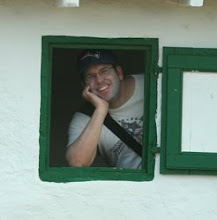Notre Dame Cemetery (2/25)

The Song Sparrows were out and singing too. Its amazing that over only a few months I can forget the bird songs. But, I had to get a look at the sparrow before I could figure out what it was.
Everywhere I walked there were signs of animal activity in the snow. In addition to the normal Gray Squirrels and small birds I found a set of Eastern Cottontail tracks. I followed them a bit and watched as the tracks showed the animal going from small hops to a full out run. Unbelievably the distance of one bound was over 10 feet (I paced it out to be 4 of my strides). I initially thought that I could have missed a set of tracks in the middle that didn't register in the snow. But I couldn't find anything.
After following the tracks for some time I wondered to myself why the rabbit was running. There weren't any predator tracks nearby. Then it hit me. Why not a Red-tailed Hawk? And this was perfect timing as a Red-tail flew out of the tree just outside the boundaries of the cemetery. The remainder of the walk I watched as this bird flew back and forth with sticks in its beak. It was obviously building a nest.
As I continued on I spotted some different tracks. From the track size and stride I decided that they were from a Striped Skunk. These are uncommon in snow since the skunk enters a state of torpor (a state similar to hibernation) during the winter. Female skunks tend to den in groups along with a single male. Most males den alone. Around this time of year the males skunks get restless and emerge from their dens and search for food. This was evidently what I was seeing since the tracks wound all over the cemetery grounds.
This is uncommon behavior for a member of the Weasel family. Most of the members of this family (River Otter, Fisher, Mink, etc.) remain active all year round. The skunk also doesn't exhibit the same gait pattern as its "cousins". But apparently the similarities between the species outweigh these differences.
I followed the skunk's trail for some time before eventually coming to the edge of the cemetery. One of the houses that abuts the cemetery had a number of feeders and the normal winter birds (Cardinals, Blue Jays, Juncos, etc.) were taking advantage of the food source. It was such a nice day that the Juncos were actually singing. While watching these birds, I discovered a hawk high in a tree. At first, I thought that it was another red-tail but after looking at the pictures and referring to several guides I decided that it was an immature Cooper's Hawk.
I was really surprised by the bird's size. But, I guess that's the result of having access to all the prey that it can eat.





